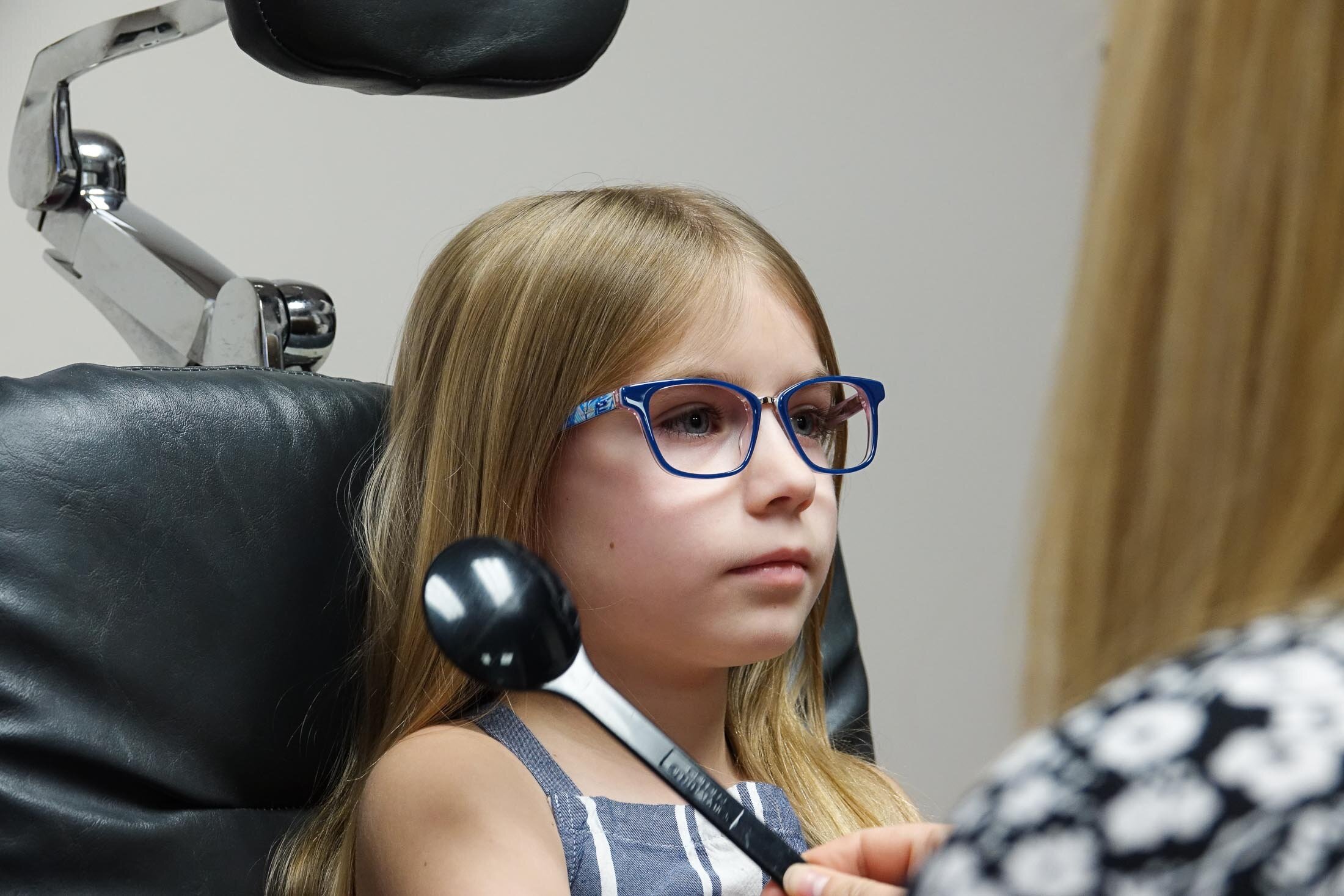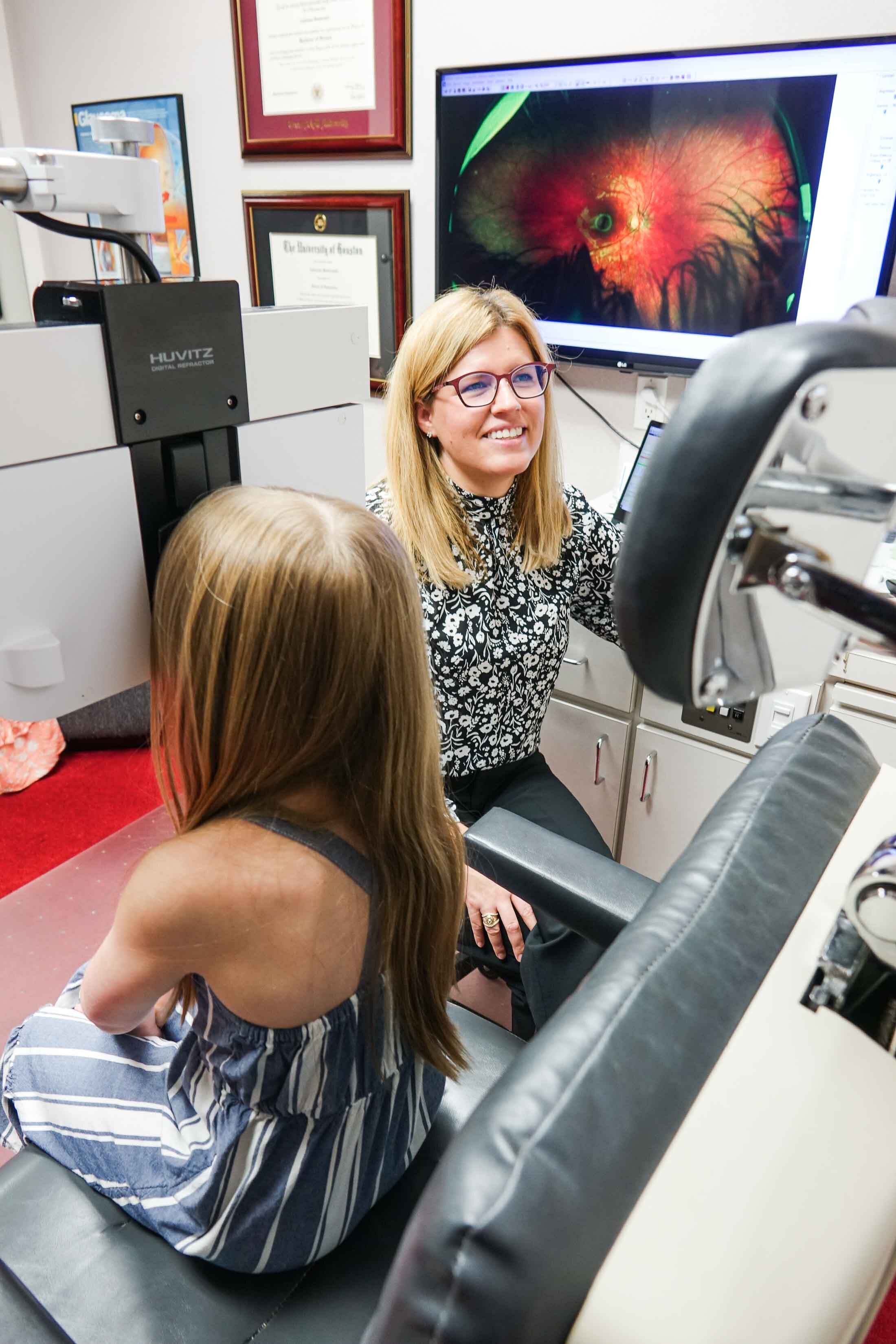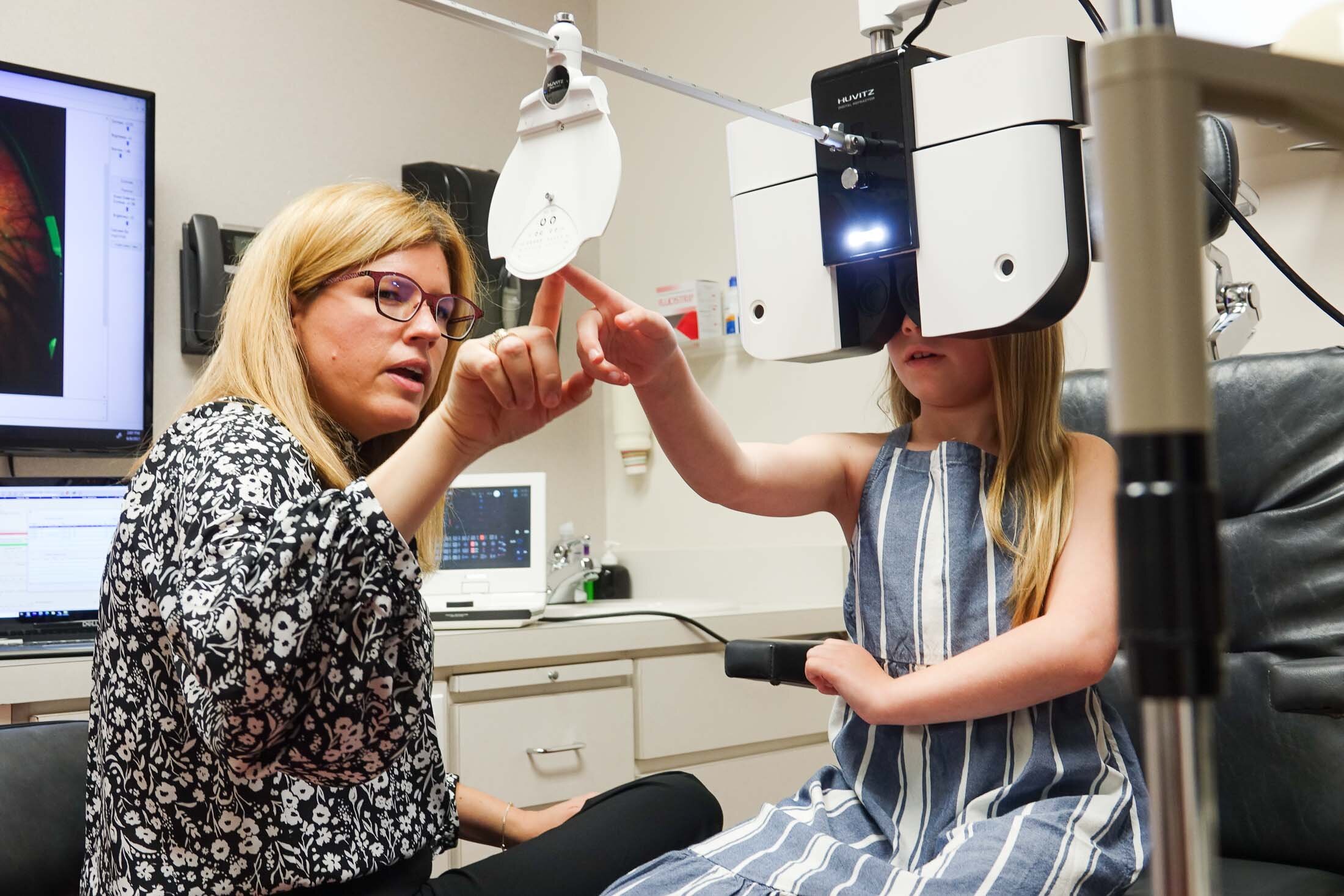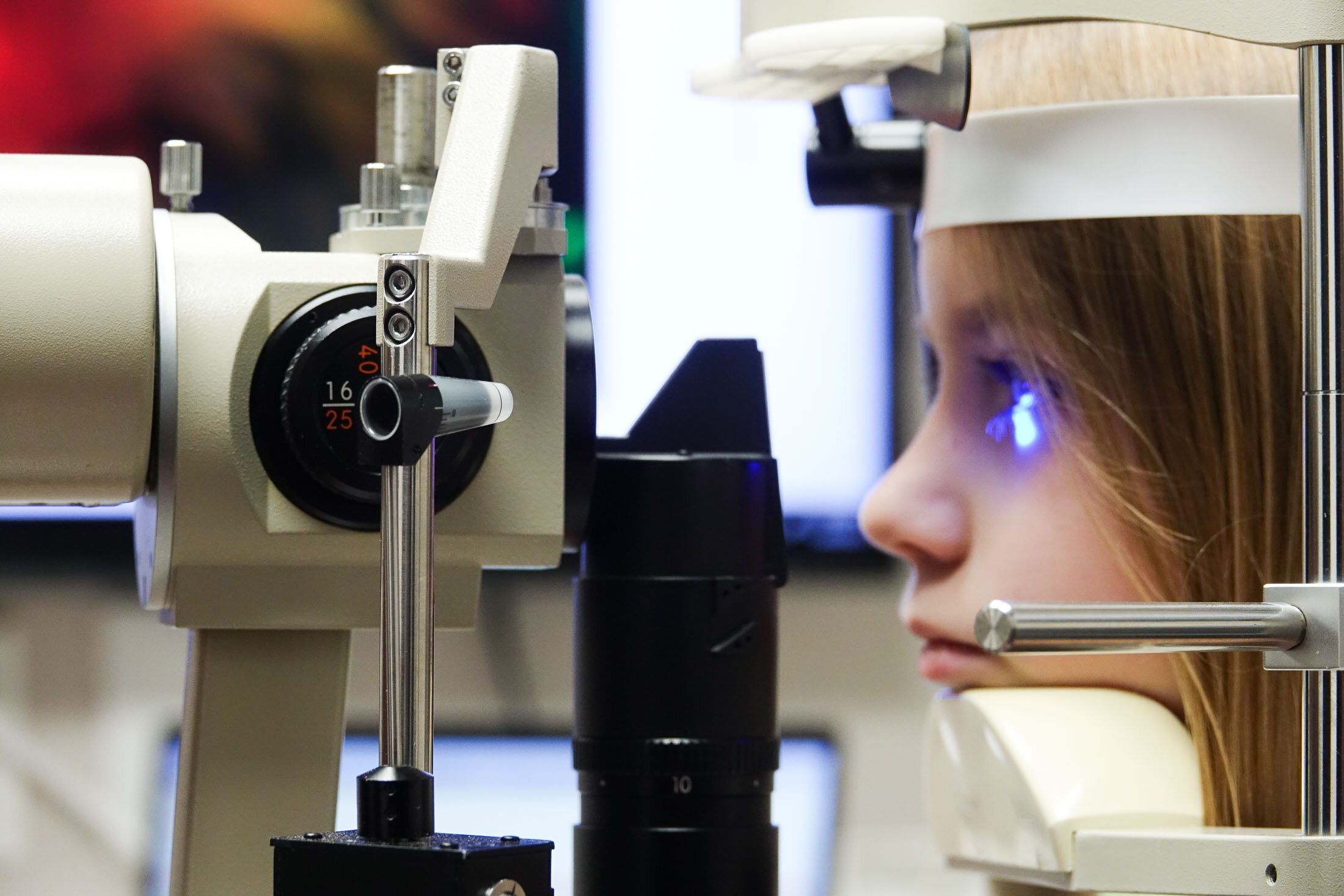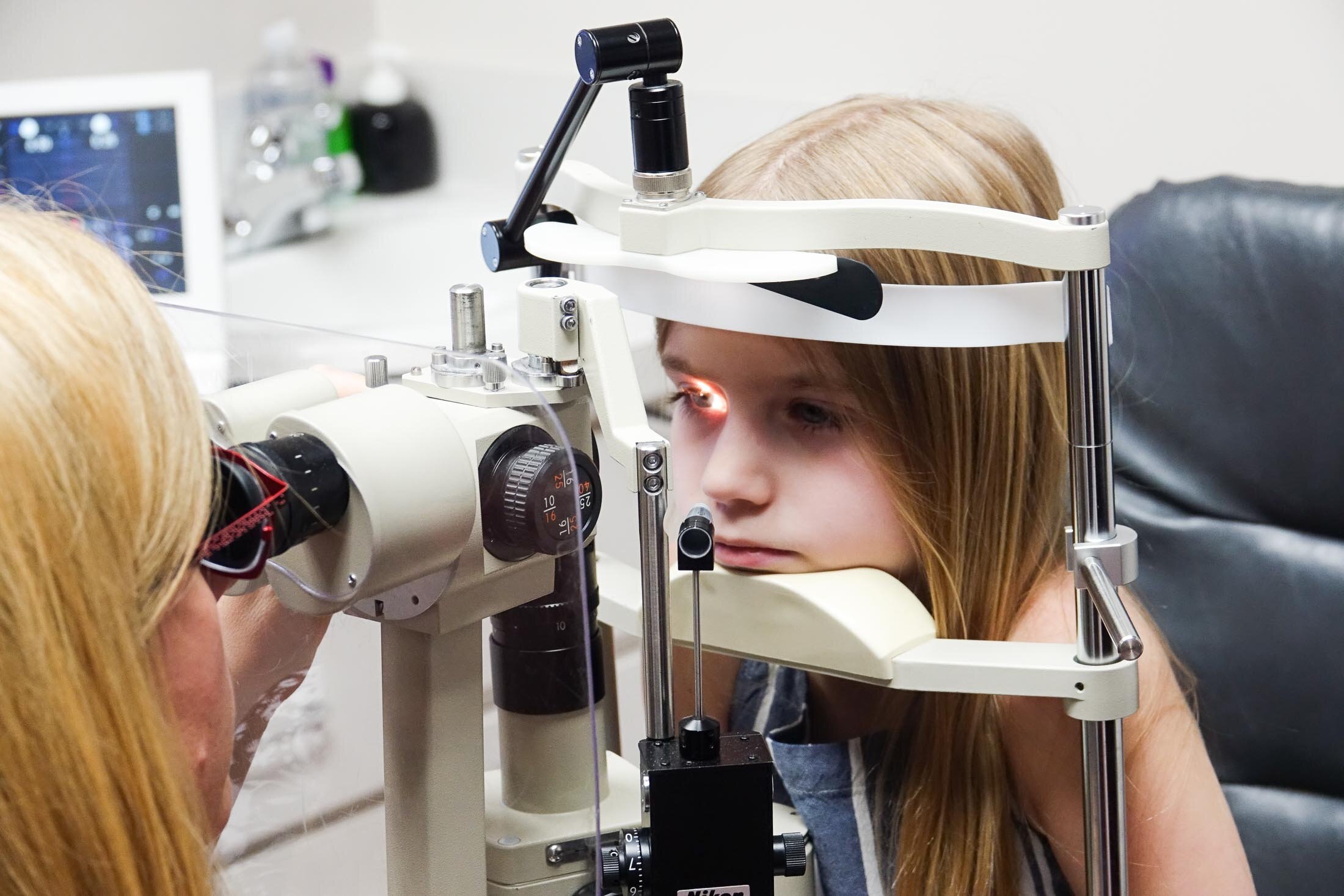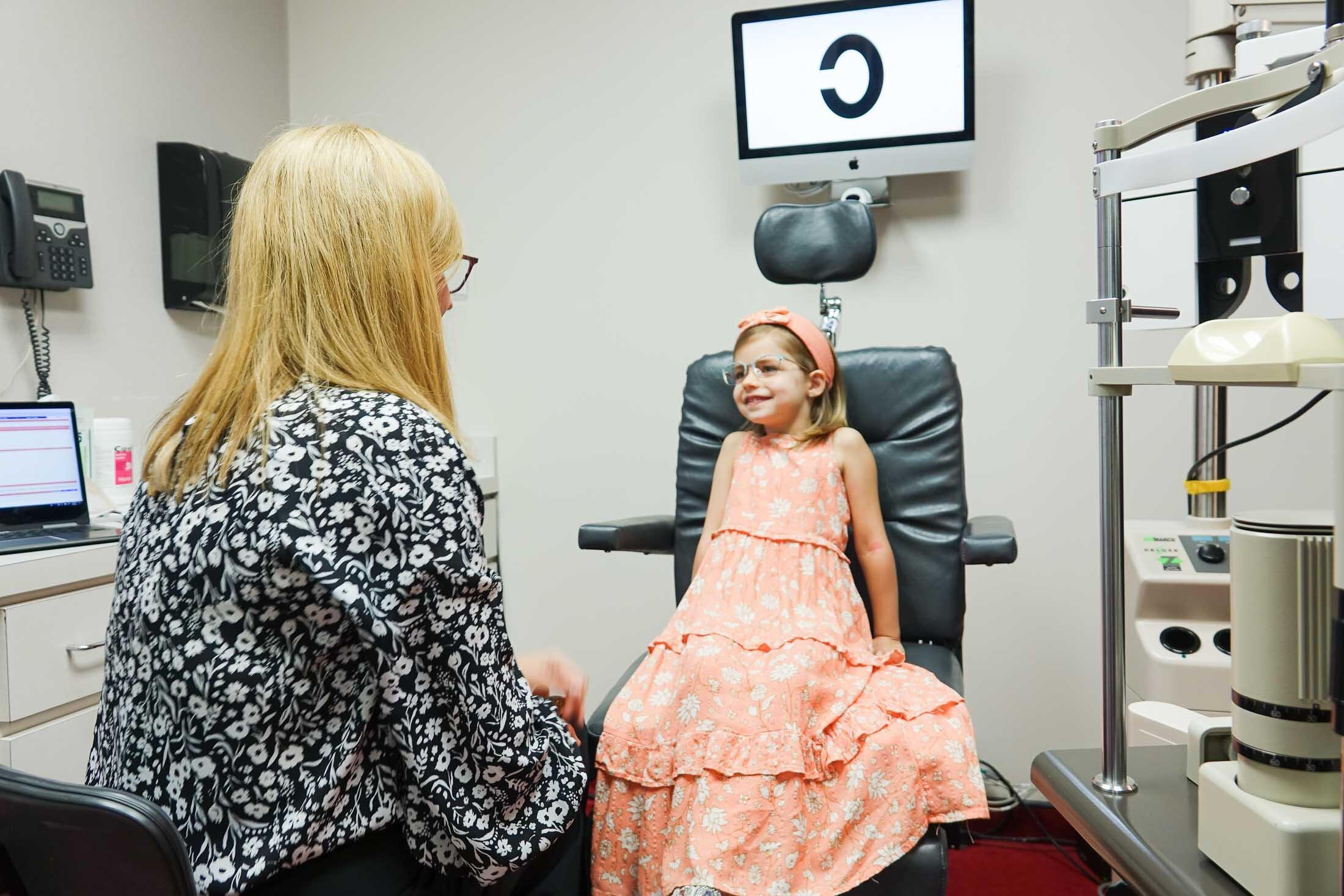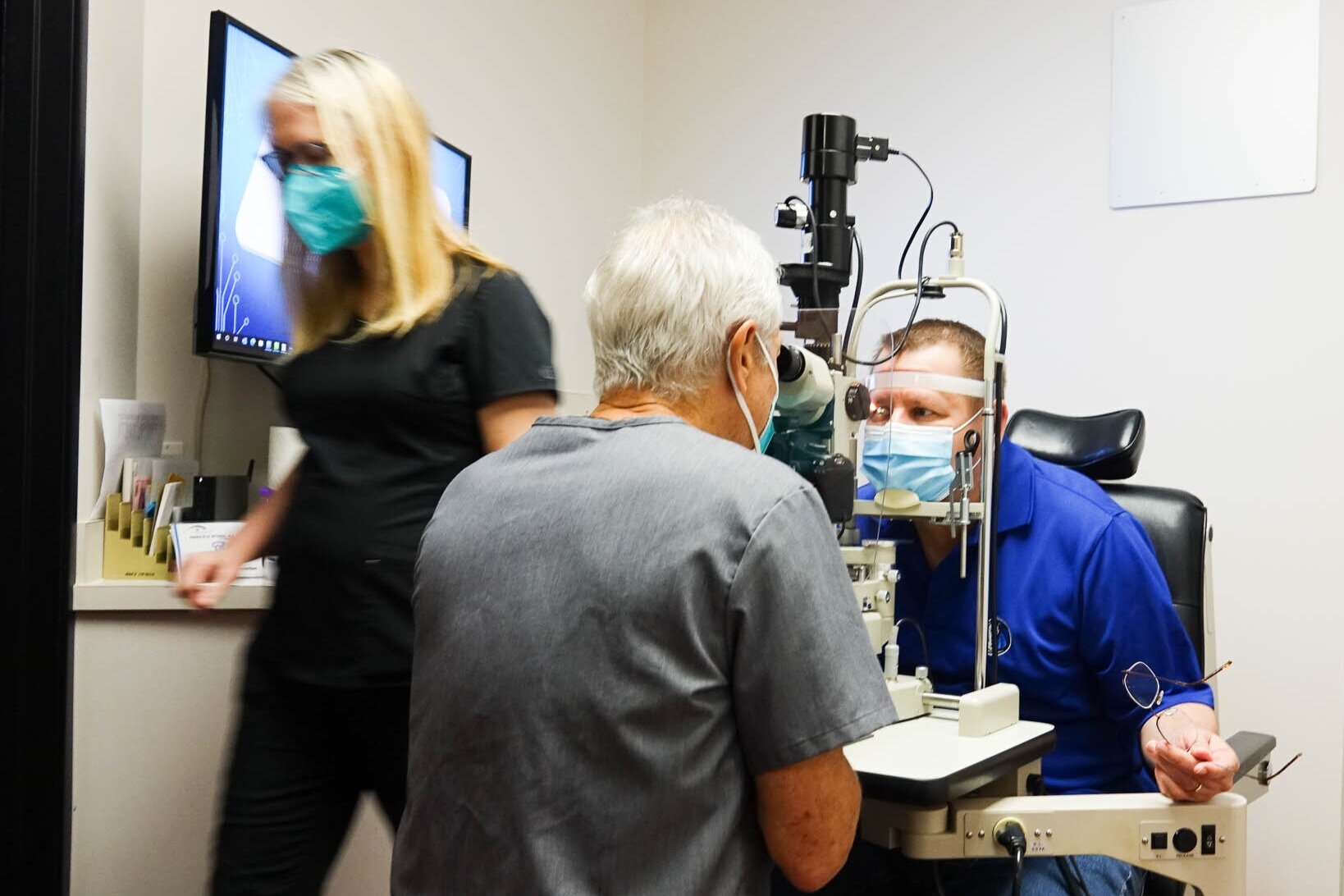
Common Eye Conditions
We're here to help.
We treat the following eye conditions frequently in our practice. If you feel you may be suffering from any of these conditions – we can help.
Give us a call to schedule an assessment.
Dry Eye
With our society’s increase of digital device use, more people including youngsters are suffering from dry eyes. Besides a scratchy or sandy feeling, symptoms may include stinging, burning or episodes of excess tearing followed by the sensation of dryness.
Besides reduced tear production, blockage of the meibomian glands on the lid margins (often related to digital device use) results in the eye producing less lipids which is the main cause of evaporative dry eye. Dry eye occurs more frequently with heating and air conditioning and in climates with dry air, as well as with the use of certain medications, including antihistamines, nasal decongestants, tranquilizers, and anti-depressants.
When artificial tears and gels do not provide adequate dryness relief and after measuring tear function, Dr. Stokol and Dr. Fagala will prescribe appropriate treatments ranging from basic lid hygiene, specific oral supplements, and Thermal Lid Therapy / meibomian gland expression.
Glaucoma
Early vision loss from primary open angle glaucoma occurs in the periphery with no symptoms to the patient. This is accompanied by significant optic nerve damage occurs and is therefore called the ‘silent thief’. Glaucoma is a leading cause of blindness in the US and one in three patients that have glaucoma will not have high eye pressure. Therefore, normal pressure readings do not preclude a diagnosis of this devastating condition.
Glaucoma can usually be controlled but not cured. The most common treatments are: eye drops, surgery and oral medication. Increased eye pressure and/or unusual optic nerve appearance (as noted during an eye exam) necessitates additional evaluation and testing to confirm or rule out any suspicion of glaucoma.
Glaucoma susceptibility is highest among patients aged sixty or older, a family history of glaucoma, taking certain medications (such as steroids) and patients who suffer from sleep apnea. Also, African Americans are five times more likely to develop glaucoma than Caucasians and Asians.
Although less common, narrow angle glaucoma can rapidly elevate eye pressure, which is accompanied by significant eye and head pain as well as hazy vision. The rise in pressure can permanently damage the optic nerve in a short period of time and must be treated as an emergency. During a routine eye exam, ifa patient is found to be susceptible to angle closure, a preventative procedure called laser peripheral iridectomy (LPI) can be performed to facilitate fluid drainage from the eye.
Cataracts
Cataracts are a clouding of the eye's internal lens, resulting in a reduction in vision and ‘dulling’ of colors. Surgery is indicated when a patient's lifestyle becomes affected to the point of not enjoying the things they like to do or being able to do necessary tasks. Loss of the internal lens clarity usually starts before age 75, but by that age most people will begin to notice some reduced vision due to their cataract formation. The removal procedure is one of the most frequently done surgeries in America and has a very low complication profile.
Once surgery is indicated and the cloudy lens has been removed, an intraocular lens is inserted as a replacement. The latest generation of intraocular lenses include extended range multifocals, which can eliminate the need for post-surgical glasses. When surgery is necessary in both eyes, a two to three week waiting period is usual before the second eye is done. Dr. Stokol and Dr. Fagala guide their patients through the entire process and co-manage their care with excellent surgeons.
Red Eye
There are multiple potential causes of a red eye and once correctly diagnosed, the appropriate treatment will be prescribed by Dr. Stokol or Dr. Fagala. Areas of concern are infection, inflammation, dryness, allergies, eye fatigue and contact lens complications. Any of these conditions can be the cause of redness and only examination by an eye doctor can accurately differentiate the cause.
Self-medicating with OTC remedies needs to be avoided, especially the use of ‘eye whitening’/vasoconstrictor drops. Without addressing the underlying reason for the redness, these drops ‘whiten’ the eye very quickly, but cause rebound within a short period of time to where more frequent use is needed to have the same effect.
Macular Degeneration
The macula is at the center of the retina, without which we would not see color or any detail. A healthy macula enables us to perform tasks such as reading, driving, identifying faces and anything else that requires detailed vision. As peripheral vision is not affected, macular degeneration does not cause total blindness. The macular does not have its own blood supply and relies on peripheral blood vessels for nutrients, so any reduction in blood flow will negatively affect macula health. Controlling blood sugar and good cardiovascular health by diet and exercise and normal blood pressure support a healthy macula. Most importantly, smoking/tobacco use, which constrict peripheral arteries significantly increase the risk of developing macular degeneration. Most patients diagnosed with macular degeneration will have the ‘dry’ form that usually progresses slowly and can be helped with appropriate supplements. When ‘wet’ is diagnosed, intravitreal injections given by a retina specialist are the therapy of choice to control vision loss.

EYE HEALTH


